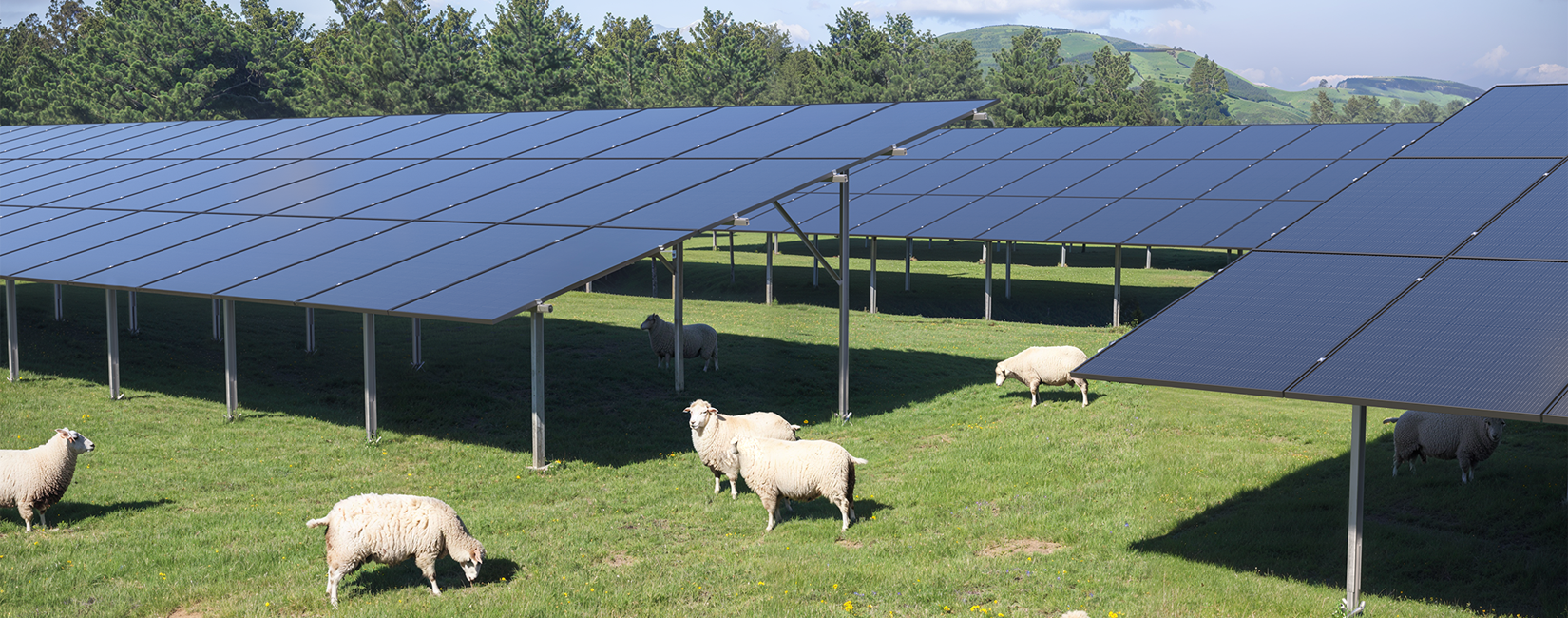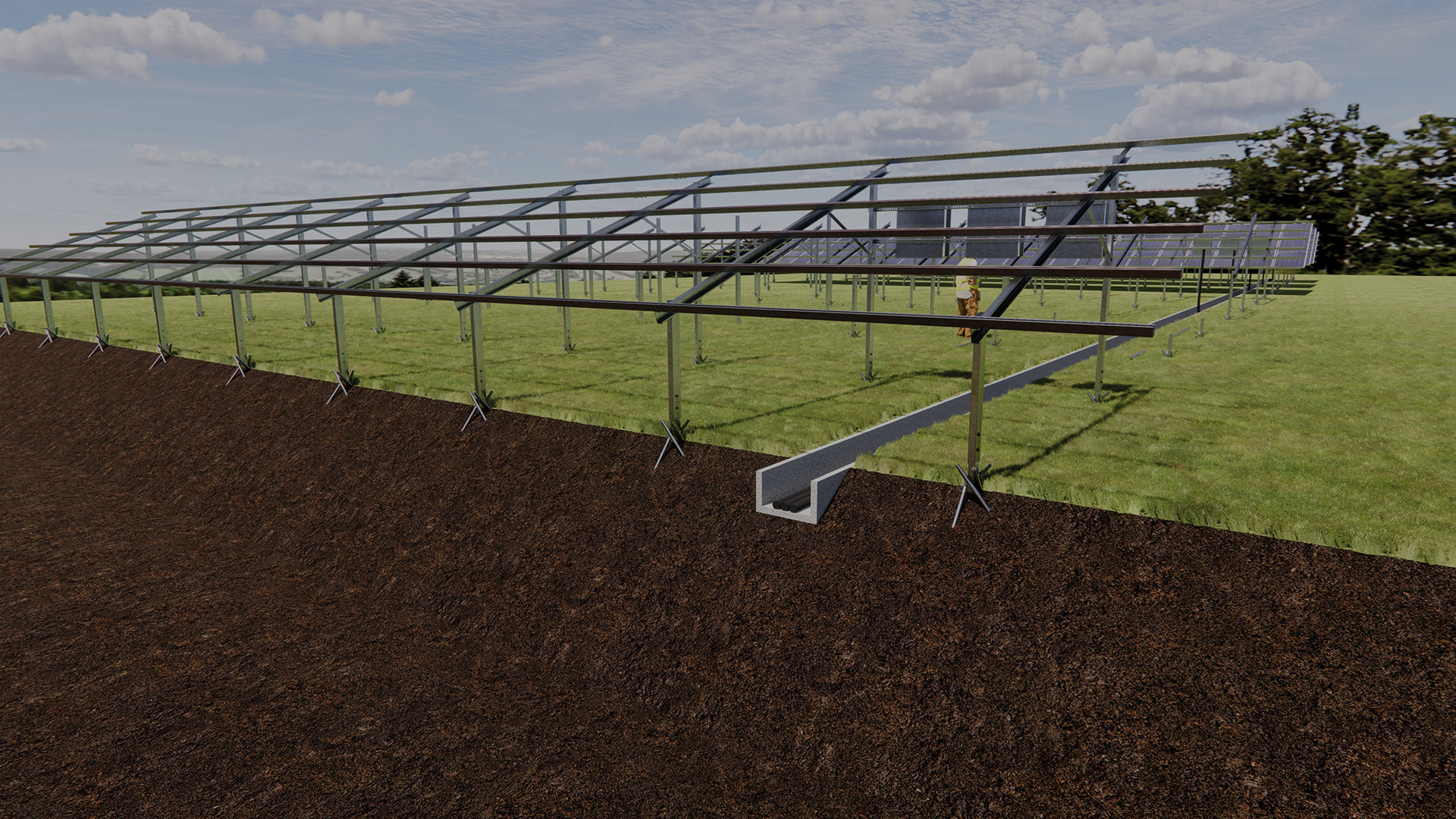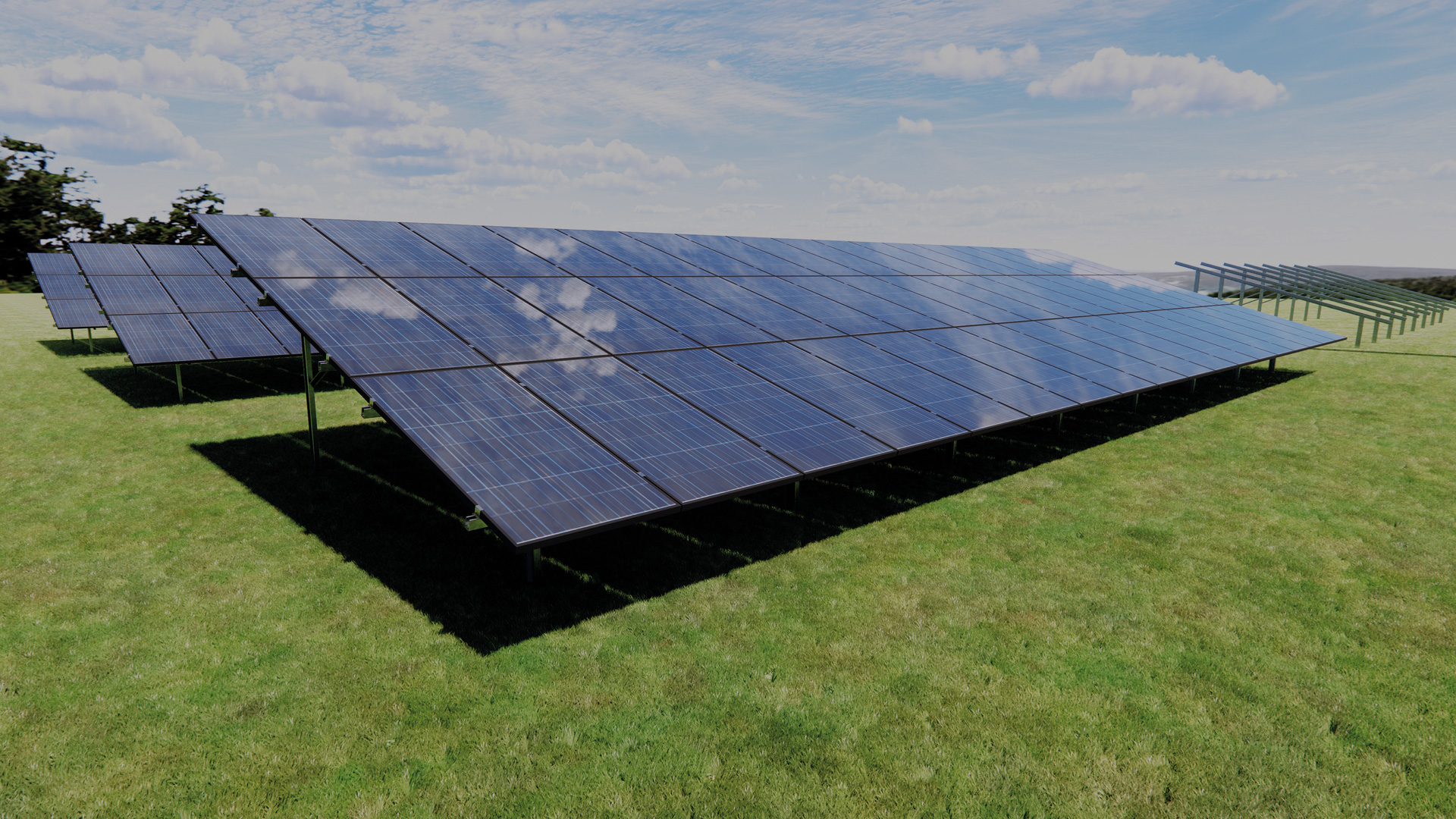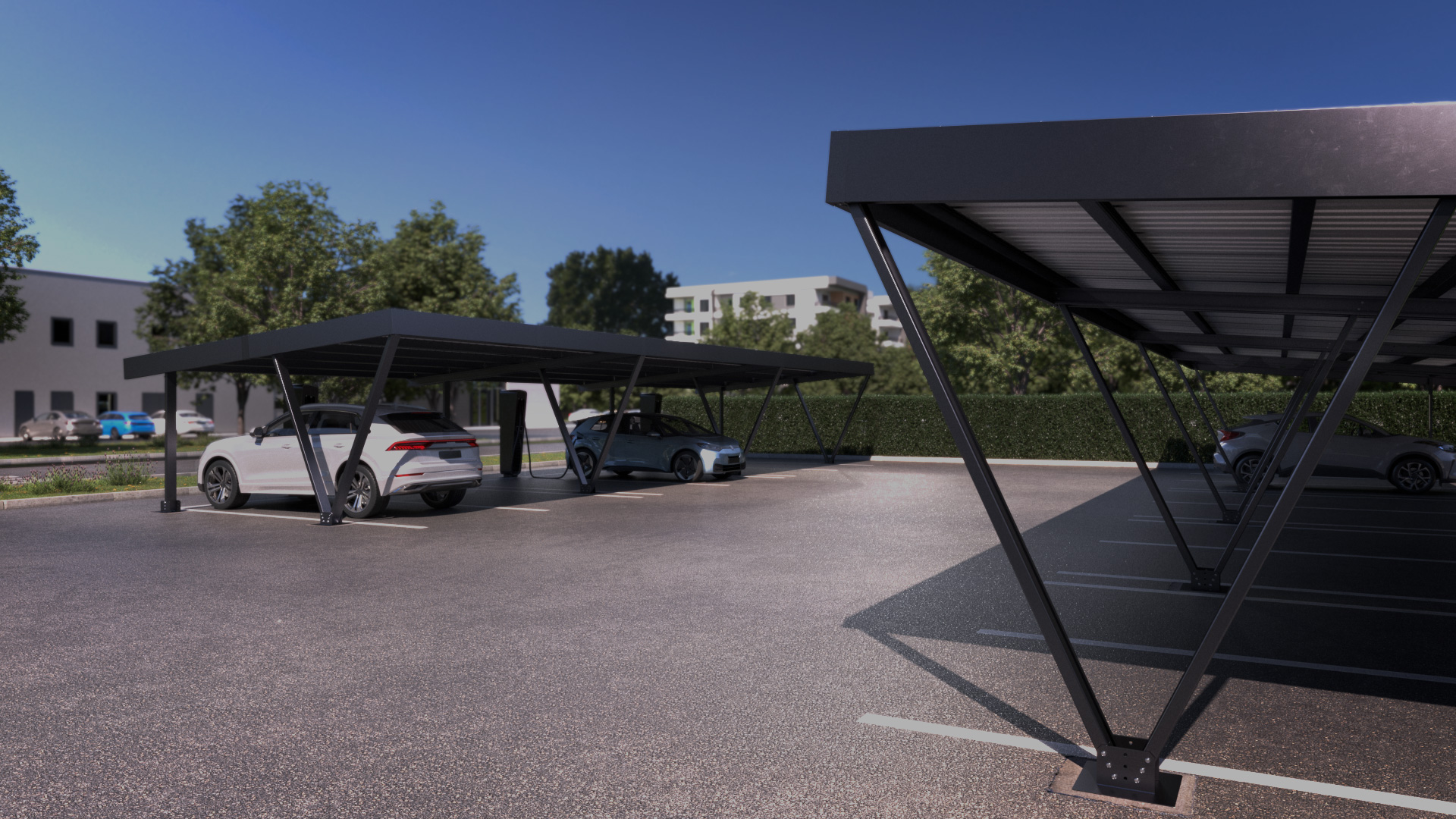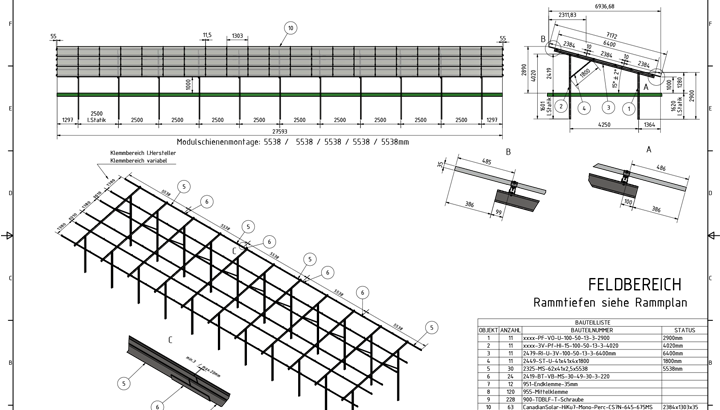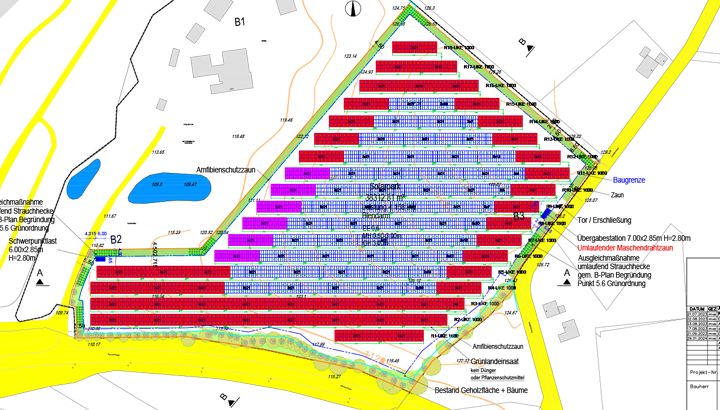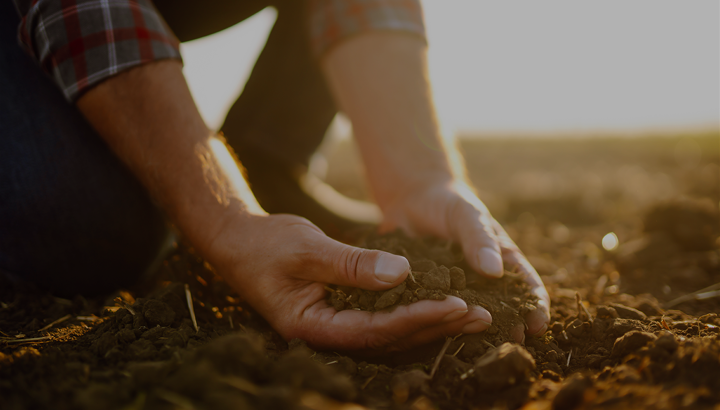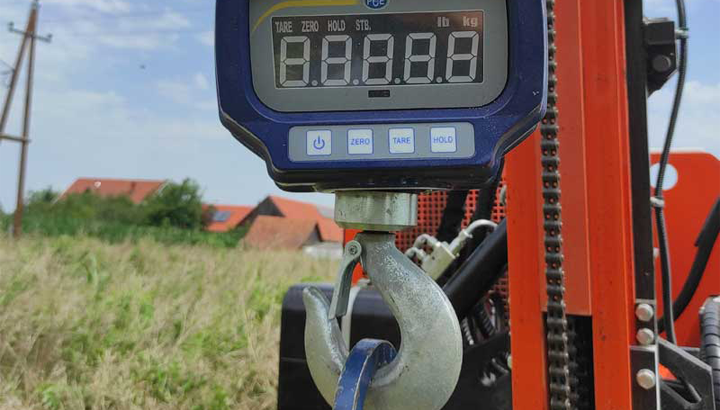
Agri-PV system
The installation of photovoltaic systems (PV systems) on fields, meadows and pastures offers agriculture a unique opportunity for the dual utilisation of land. This innovative combination allows both clean energy to be generated and agricultural yields to be secured, making a significant contribution to the sustainable use of resources.
Win-Win-Situation
In contrast to ground-mounted systems, Agri-PV systems offer an innovative way of dual utilisation of agricultural land. These systems integrate photovoltaic modules into agricultural areas to generate clean energy, while the land can still be used for growing crops or keeping animals.
In the livestock farming sector, cows, sheep or goats usually benefit from protection against intense UV radiation, which improves animal welfare. In terms of crop yields, the Fraunhofer Institute has seen significant yield increases in its test facilities, particularly for potatoes and soft fruits such as blueberries and raspberries.
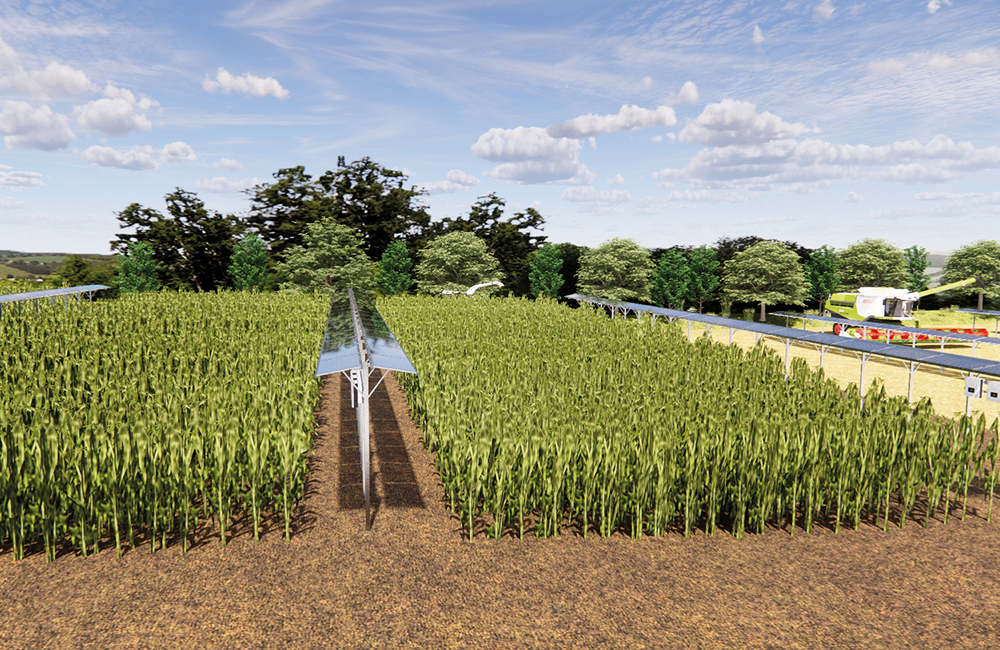
Advantages
- Optimised land use: By combining both types of use, the available space is used more efficiently, which is particularly advantageous in regions with limited agricultural land.
- Yield increase: The shading effect of solar modules can in some cases lead to improved soil moisture and reduced water consumption, which can increase agricultural yields.
- Income diversification: Farmers can tap into additional sources of income by feeding solar power into the grid, which increases economic stability and independence.
- Environmental and climate protection: The simultaneous use of land for energy production and agriculture contributes to the reduction of greenhouse gas emissions and promotes sustainable practices.
Challenges
Although dual use offers many advantages, there are also challenges that need to be taken into account:
- Planning and design: The installation of the solar modules must be planned in such a way that it does not interfere with agricultural use. This requires careful design and arrangement of the modules and close co-operation with the farms to ensure sufficient space for machinery and plant growth.
- Technical adaptations: In some cases, special technical adaptations are necessary, such as increasing the module height to allow the passage of agricultural machinery or the use of tracking systems that adapt to the position of the sun.
- Economic aspects: The investment costs of agrivoltaic systems can be comparatively high. It is therefore important that farmers have access to funding programmes and financing options to make such projects possible.
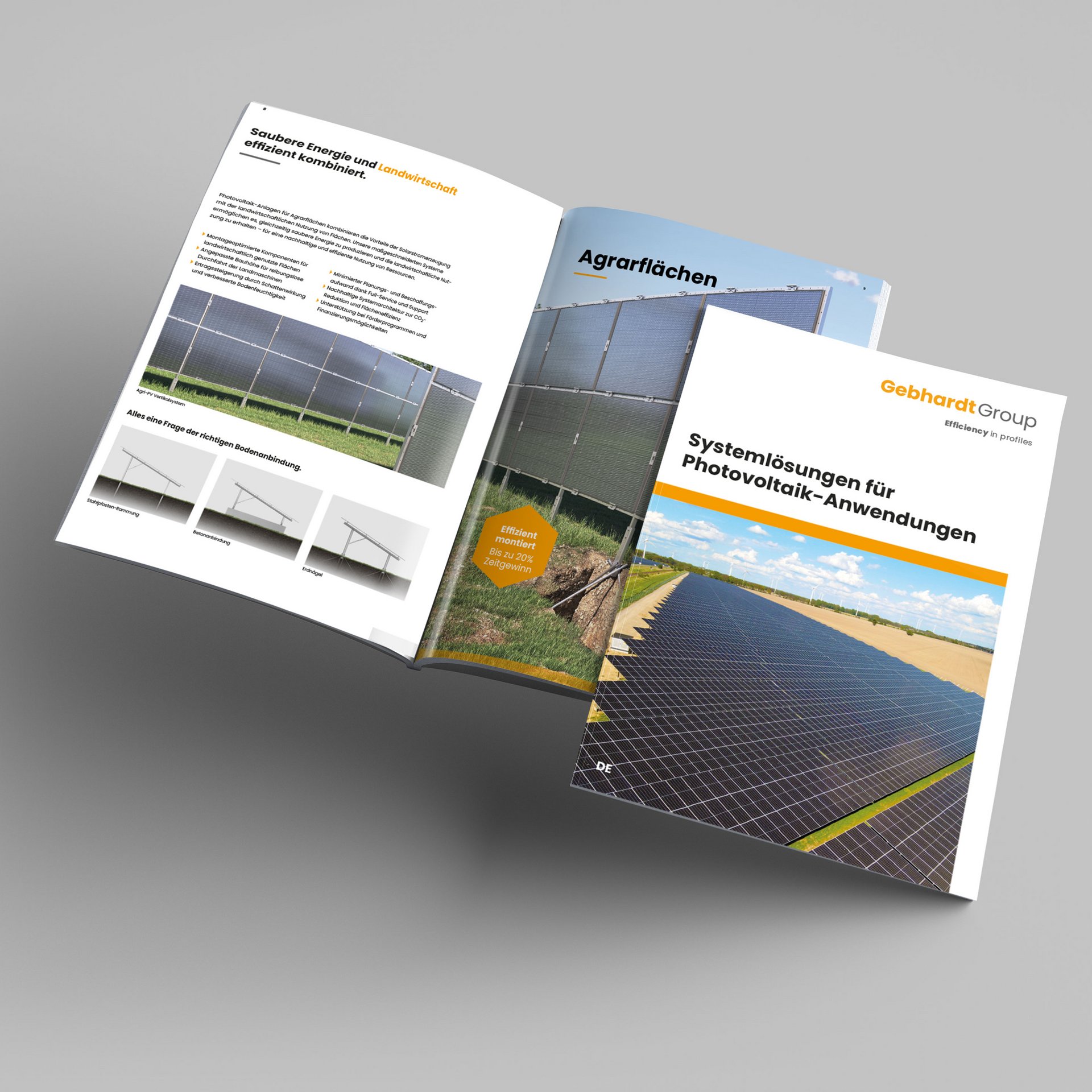
Innovative PV solutions at a glance
Take a look at our latest solutions for installing photovoltaic systems. Whether for facades, agricultural applications or ground-mounted systems, our well-designed mounting systems enable fast, safe and economical implementation. Thanks to modular concepts and high-quality materials, our systems can be flexibly adapted to a wide range of applications.
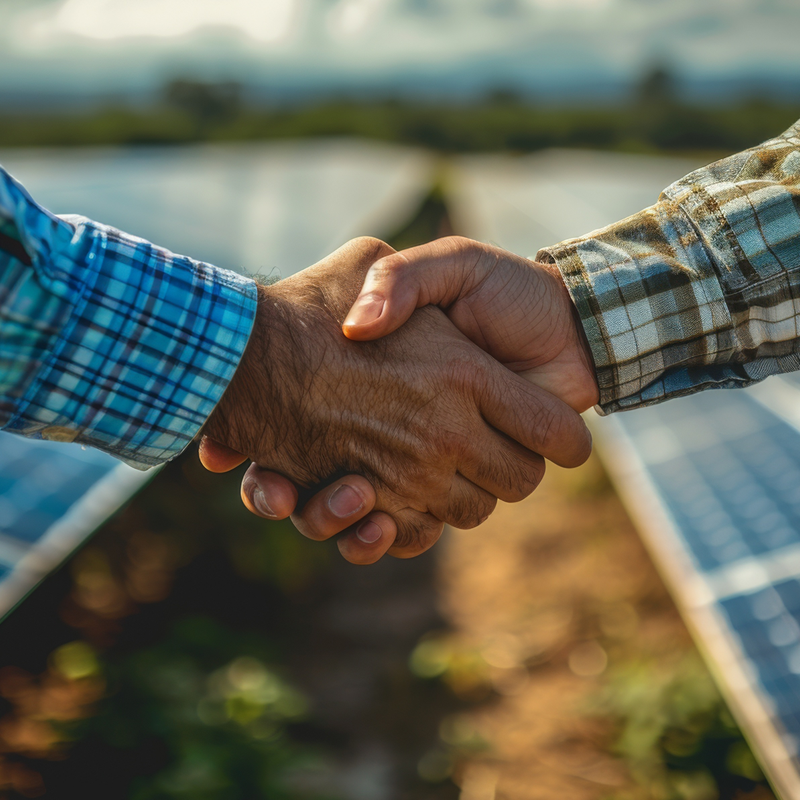
More than just profiles
- Customised solutions that meet the specific requirements of each project.
- Additional services such as technical advice, project management support, occupancy and pile-driving plans and much more.
- Focus on a holistic view of the projects to ensure that the products are perfectly harmonised.
